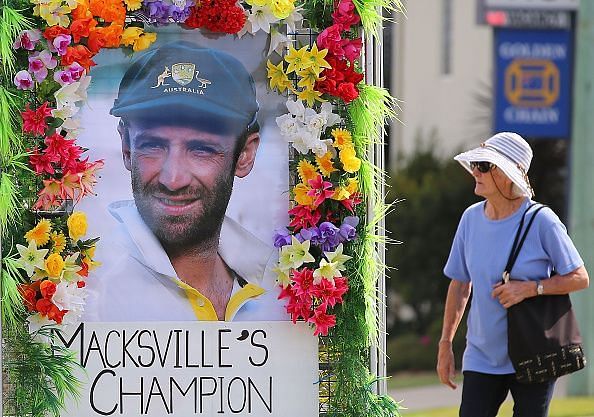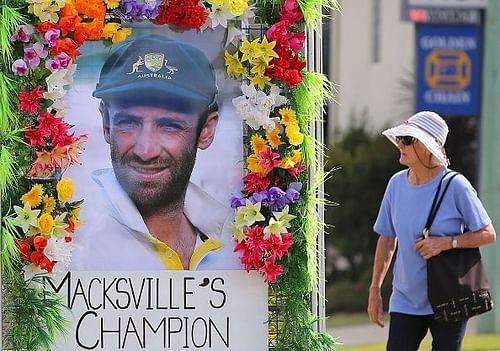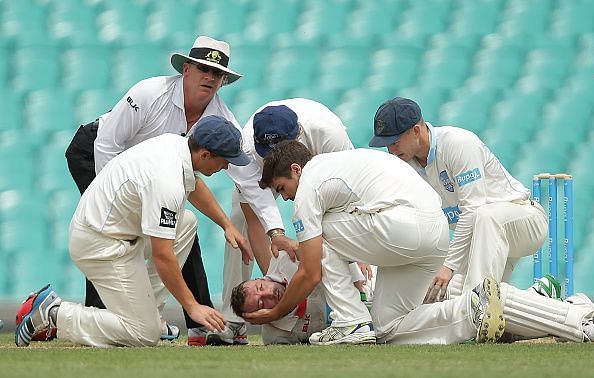
Remembering Phillip Hughes and the unfortunate incident that changed the game forever

On the 25th of November, 2014, the cricketing world has shaken to its core when Phillip Hughes copped a blow to his neck while batting against New South Wales in a Sheffield Shield encounter at the hallowed Sydney Cricket Ground. The left-handed batsmen, attempting to pull a short delivery off Sean Abbott, collapsed right away, meaning that immediate care had to be provided and the southpaw had to be rushed to the hospital.
Unfortunately, though, after battling for his life for a couple of days, he succumbed to his injuries, thereby throwing an enormous carpet of gloom and sadness over Australian cricket.
Consequently, the whole of the nation and the cricketing fraternity mourned the death of a promising player, who had once been touted as Australia’s next big thing. More tellingly though, the world grieved for a human being who had devastatingly lost his life in a game that embodies the art of boasting an indomitable spirit.
To put things into perspective, several of his friends had seen him tragically pass away doing what he and his fellow cricketers loved most, a sight that certainly made several introspect what lay in store for them.
Luckily though, the sport has traversed a path far away from all the questions and uncertainties that were raised on that fateful morning in Sydney.

In the aftermath of that unfortunate incident, helmet manufacturers introduced a new set of helmets which comprised of increased protection around the neck. A foam-based material was used in order to give that extra cushion while also not acting as an impediment to the movement of the batsmen.
And, even though a few investigations have portrayed that certain changes in equipment might not have altered the outcome, they certainly have provided the batsmen with more protection, meaning that they feel more secure, above everything else.
Furthermore, the ICC has implemented the idea of concussion substitutes, a situation where a player could be withdrawn completely if there are chances of him being concussed and subsequently, not being fit enough to take part in the game.
And, in recent months, that particular concept has worked a charm, especially when cricketers have been struck by bouncers and have been unable to think clearly. The first instance occurred during the 2019 Ashes when Steve Smith was replaced by Marnus Labuschagne whereas the latest took place in the recent pink-ball Test between India and Bangladesh.
The move is extremely essential on a couple of counts. Firstly, it takes the decision of continuing or not away from the player, meaning the physio is solely responsible for the call. Earlier, the courage of cricketers to stick it out and graft in the middle, even when faced with such adversity, usually took over, thereby enabling the actual consequences to only be felt much later.
Secondly, it has meant that the ICC and the players on the field are much more aware of such a circumstance coming true, which might not have been the case in years gone by.
Thus, that catastrophic event on the 25th of November five years ago, has certainly helped change the sport for the better. And, despite numerous people paying countless tributes to the late Philipp Hughes, the greatest of them all could be the improvement of the game that he cherished so dearly.
And, it is extremely disheartening and unfortunate that he isn’t around to savour those enhancements.